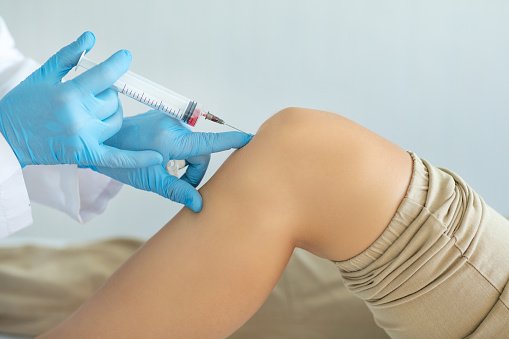PRP Injection Therapy

PRP injection therapy is a treatment wherein platelet rich plasma (PRP) is extracted from your blood and then concentrated in a centrifuge to release the growth and healing components. Typically, this treatment causes bruising and swelling but the patient should experience minimal discomfort. Patients may experience pain and swelling for seven to ten days following the procedure. Patients may be advised to avoid vigorous exercise for one to two weeks after the procedure. In addition, patients should inform their doctor about any medications they are currently taking.
In some cases, patients are asked to stop taking blood thinners or fish oil supplements before receiving the injection. Patients should consult with their doctors regarding the safety of PRP injection therapy before undergoing surgery. It may be necessary to undergo several sessions before you see positive results from PRP injection therapy. In addition, patients should consult a doctor if they are experiencing increased pain or swelling after the procedure. Patients can receive several treatments of platelet rich plasma over several weeks or even months. The treatment can help reduce pain and improve functionality in the body. This treatment involves injecting a patient's own blood, with the platelet-rich portion separated and injected into the injured area. This treatment can reduce the need for long-term rest, rehabilitation or physical therapy. The procedure takes about half an hour. In most cases, patients can return to work the same day.Get more facts about thyroids at https://en.wikipedia.org/wiki/Hashimoto%27s_thyroiditis.
Most PRP injections are painless. However, patients may experience mild pain and swelling after the procedure. If pain persists, we can help you take acetaminophen or ice. PRP injection therapy can reduce chronic pain. If it is necessary, you should contact a physician right away if you experience any serious side effects. However, it is important to note that PRP isn't covered by insurance plans. PRP injection therapy is a treatment that is considered experimental and therefore not covered by most insurance plans. Our targeted produced by a process that takes advantage of the healing abilities of the body's own cells. During the preparation process, a patient's whole blood sample is collected. The blood is mixed with an anticoagulant factor and placed in a centrifuge. The centrifugation process separates the blood into three distinct layers: platelet-poor blood, red blood cells, and a buff layer that contains concentrated leucocytes and platelets.
Activated platelets support cell growth and repair, and can speed up the recovery time after sports injuries or chronic tendon injuries. A normal platelet concentration ranges from 150,000 to 350,000 per mililitre, but higher concentrations have been found to increase tissue healing and bone regeneration. These results are promising and show that PRP can be a beneficial treatment for chronic pain and injury. This is an extremely effective treatment for chronic pain and injury. The growth factors in platelets are essential for wound healing. These factors can also promote healing and reduce the need for medications and surgical approaches. A doctor may recommend PRP injections after performing major joint surgery. This treatment may be suitable for individuals with osteoarthritis. For people who have suffered an injury in a sports or recreational activity, PRP injection therapy can help reduce pain and increase mobility. There is also a possibility of regenerative effects after major joint surgery.
